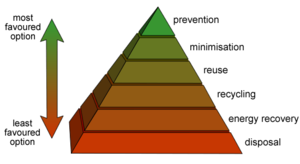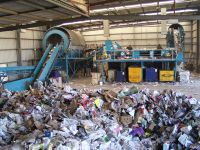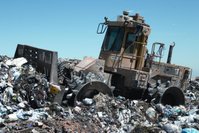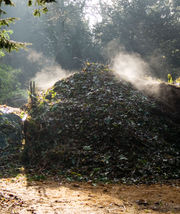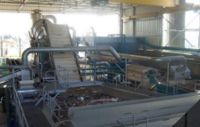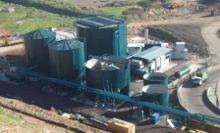Waste management
2007 Schools Wikipedia Selection. Related subjects: Environment
| Environmental science |
|---|
| Environmental technology |
|
Waste management is the collection, transport, processing ( waste treatment), recycling or disposal of waste materials, usually ones produced by human activity, in an effort to reduce their effect on human health or local aesthetics or amenity. A subfocus in recent decades has been to reduce waste materials' effect on the natural world and the environment and to recover resources from them.
Waste management can involve solid, liquid or gaseous substances with different methods and fields of expertise for each.
Waste management practices differ for developed and developing nations, for urban and rural areas, and for residential, industrial, and commercial producers. Waste management for non- hazardous residential and institutional waste in metropolitan areas is usually the responsibility of local government authorities, while management for non-hazardous commercial and industrial waste is usually the responsibility of the generator.
History of waste management
Waste management concepts
There are a number of concepts about waste management, which vary in their usage between countries or regions.
The waste hierarchy:
- reduce
- reuse
- recycle
classifies waste management strategies according to their desirability. The waste hierarchy has taken many forms over the past decade, but the basic concept has remained the cornerstone of most waste minimisation strategies. The aim of the waste hierarchy is to extract the maximum practical benefits from products and to generate the minimum amount of waste.
Some waste management experts have recently incorporated a 'fourth R': "Re-think", with the implied meaning that the present system may have fundamental flaws, and that a thoroughly effective system of waste management may need an entirely new way of looking at waste. Some "re-think" solutions may be counter-intuitive, such as cutting fabric patterns with slightly more "waste material" left -- the now larger scraps are then used for cutting small parts of the pattern, resulting in a decrease in net waste. This type of solution is by no means limited to the clothing industry.
Source reduction involves efforts to reduce hazardous waste and other materials by modifying industrial production. Source reduction methods involve changes in manufacturing technology, raw material inputs, and product formulation. At times, the term "pollution prevention" may refer to source reduction.
Another method of source reduction is to increase incentives for recycling. Many communities in the United States are implementing variable rate pricing for waste disposal (also known as Pay As You Throw - PAYT) which has been effective in reducing the size of the municipal waste stream.
Source reduction is typically measured by efficiencies and cutbacks in waste. Toxics use reduction is a more controversial approach to source reduction that targets and measures reductions in the upstream use of toxic materials. Toxics use reduction emphasises the more preventive aspects of source reduction but, due to its emphasis on toxic chemical inputs, has been opposed more vigorously by chemical manufacturers. Toxics use reduction programs have been set up by legislation in some states, e.g., Massachusetts, New Jersey and Oregon.
Recycling
Recycling means to recover for other use a material that would otherwise be considered waste. The popular meaning of ‘recycling’ in most developed countries has come to refer to the widespread collection and reuse of various everyday waste materials. They are collected and sorted into common groups, so that the raw materials from these items can be used again (recycled).
In developed countries, the most common consumer items recycled include aluminium beverage cans, steel, food and aerosol cans, HDPE and PET plastic bottles, glass bottles and jars, paperboard cartons, newspapers, magazines, and cardboard. Other types of plastic ( PVC, LDPE, PP, and PS: see resin identification code) are also recyclable, although not as commonly collected. These items are usually composed of a single type of material, making them relatively easy to recycle into new products.
The recycling of obsolete computers and electronic equipment is important, but more costly due to the separation and extraction problems. Much electronic waste is sent to Asia, where recovery of the gold and copper can cause environmental problems (monitors contain lead and "heavy metals" such as selenium and cadmium are commonly found in electronic items).
Recycled or used materials have to compete in the marketplace with new (virgin) materials. The cost of collecting and sorting the materials often means that they are equally or more expensive than virgin materials. This is most often the case in developed countries where industries producing the raw materials are well-established. Practices such as trash picking can reduce this value further, as choice items are removed (such as aluminium cans). In some countries, recycling programs are subsidised by deposits paid on beverage containers (see container deposit legislation).
The economics of recycling junked automobiles also depends on the scrap metal market except where recycling is mandated by legislation (as in Germany).
However, most economic systems do not account for the benefits to the environment of recycling these materials, compared with extracting virgin materials. It usually requires significantly less energy, water and other resources to recycle materials than to produce new materials. For example, recycling 1000 kg of aluminium cans saves approximately 5000 kg of bauxite ore being mined (source: ALCOA Australia) and 97% of the energy required to refine it; recycling steel saves about 95% of the energy used to refine virgin ore (source: U.S. Bureau of Mines).
In many areas, material for recycling is collected separately from general waste, with dedicated bins and collection vehicles. Other waste management processes recover these materials from general waste streams. This usually results in greater levels of recovery than separate collections of consumer-separated beverage containers, but are more complex and expensive.
Waste management techniques
Managing municipal waste, industrial waste and commercial waste has traditionally consisted of collection, followed by disposal. Depending upon the type of waste and the area, a level of processing may follow collection. This processing may be to reduce the hazard of the waste, recover material for recycling, produce energy from the waste, or reduce it in volume for more efficient disposal.
Collection methods vary widely between different countries and regions, and it would be impossible to describe them all. For example, in Australia most urban domestic households have a 240 litre (63.4 gallon) bin that is emptied weekly by the local council. Many areas, especially those in less developed areas, do not have a formal waste-collection system in place.
In Canadian urban centres curbside collection is the most common method of disposal, whereby the city collects waste, and or recyclables, and or organics on a scheduled basis from residential areas. In rural areas people dispose of their waste at transfer stations. Waste collected is then transported to a regional landfill.
Disposal methods also vary widely. In Australia, the most common method of disposal of solid waste is to landfills, because it is a large country with a low-density population. By contrast, in Japan it is more common for waste to be incinerated, because the country is smaller and land is scarce.
Landfill
Disposing of waste in a landfill is the most traditional method of waste disposal, and it remains a common practice in most countries. Historically, landfills were often established in disused quarries, mining voids or borrow pits. Running a landfill that minimises environmental problems can be a hygienic and relatively inexpensive method of disposing of waste materials; however, a more efficient method of disposal will be needed in time as less land becomes available for such purposes.
Older or poorly managed landfills can create a number of adverse environmental impacts, including wind-blown litter, attraction of vermin and pollutants such as leachate, which can leach into and pollute groundwater and rivers. Another product of landfills containing harmful wastes is landfill gas, mostly composed of methane and carbon dioxide, which is produced as the waste breaks down anaerobically.
Characteristics of a modern landfill include methods to contain leachate, such as lining clay or plastic liners. Disposed waste should be compacted and covered to prevent attracting mice and rats and preventing wind-blown litter. Many landfills also have a landfill gas extraction system installed after closure to extract the gas generated by the decomposing waste materials. This gas is often burnt in a gas engine to generate electricity. Even flaring the gas off is a better environmental outcome than allowing it to escape to the atmosphere, as this consumes the methane, which is a far stronger greenhouse gas than carbon dioxide. Some of it can be tapped for use as a fuel.
Many local authorities, especially in urban areas, have found it difficult to establish new landfills due to opposition from owners of adjacent land. Few people want a landfill in their local neighbourhood. As a result, solid waste disposal in these areas has become more expensive as material must be transported further away for disposal.
Some oppose the use of landfills in any way, anywhere, arguing that the logical end result of landfill operations is that it will eventually leave a drastically polluted planet with no canyons, and no wild space. Some futurists have stated that landfills will be the "mines of the future": as some resources become more scarce, they will become valuable enough that it would be necessary to 'mine' them from landfills where these materials were previously discarded as valueless.
This fact, as well as growing concern about the impacts of excessive materials consumption, has given rise to efforts to minimise the amount of waste sent to landfill in many areas. These efforts include taxing or levying waste sent to landfill, recycling the materials, converting material to energy, designing products that require less material, and legislation mandating that manufacturers are responsible for final packaging and materials disposal costs (as in the manufacturers setting up and funding the "Grüne Punkt" in Germany to achieve that end). A related subject is that of industrial ecology, where the material flows between industries is studied. The by-products of one industry may be a useful commodity to another, leading to reduced materials wastestream.
Incineration
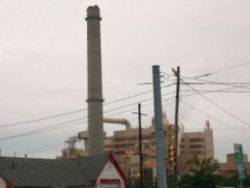
Incineration is the process of destroying waste material by burning it. Incineration is often alternatively named "Energy-from-waste" (EfW) or "waste-to-energy"; this is misleading as there are other ways of recovering energy from waste that do not involve directly burning it (see anaerobic digestion, pyrolysis & gasification).
Incineration is carried out both on a small scale by individuals, and on a large scale by industry. It is recognised as a practical method of disposing of hazardous waste materials, such as biological medical waste. Many entities now refer to disposal of wastes by exposure to high temperatures as thermal treatment (however this also includes gasification and pyrolysis). This concept encompasses recovery of metals and energy from municipal solid waste (MSW) as well as safe disposal of the remaining ash and reduction of the volume of waste.
Though classic incineration is still widely used in many areas, especially developing countries, incineration as a waste management tool is becoming controversial for several reasons.
First, it may be a poor use of many waste materials because it destroys not only the raw material, but also all of the energy, water, and other natural resources used to produce it. Some energy can be reclaimed as electricity by using the combustion to create steam to drive an electrical generator, but even the best incinerator can only recover a fraction of the caloric value of fuel materials.
Second, incineration of municipal solid wastes does produce significant amounts of dioxin and furan emissions to the atmosphere. Dioxins and furans are considered by many to be serious health hazards. However, advances in emission control designs and very stringent new governmental regulations have caused large reductions in the amount of dioxins and furans produced by waste-to-energy plants. The U.S. Environmental Protection Agency (EPA) and the European Union have taken the lead in mandating very strict emission standards for incineration of wastes.
Incineration also produces large amounts of ash requiring safe disposal so as not to contaminate underground aquifers. Until recently, safe disposal of incinerator ash was a major problem. In the mid-1990s, experiments in France and Germany used electric plasma torches to melt incinerator ash into inert glassy pebbles, valuable in concrete production. Incinerator ash has also been chemically separated into lye and other useful chemicals. This process, plasma arc waste disposal, is now operated commercially, and is used to convert existing waste and landfill into power generating gas and construction rubble.
An incineration technique that avoids ash disposal problems is the incorporation of the ash in portland cement furnaces, saving fuel otherwise burned for cement kilns. It is important to note that using incinerrator ash in concerete or block work may carry a risk of spreading dioxins and furans concentrated in the incinerator ash.
Composting and anaerobic digestion
Waste materials that are organic in nature, such as plant material, food scraps, and paper products, are increasingly being recycled. These materials are put through a composting and/or digestion system to control the biological process to decompose the organic matter and kill pathogens. The resulting stabilized organic material is then recycled as mulch or compost for agricultural or landscaping purposes.
There are a large variety of composting and digestion methods and technologies, varying in complexity from simple windrow composting of shredded plant material, to automated enclosed-vessel digestion of mixed domestic waste. These methods of biological decomposition are differentiated as being aerobic in composting methods or anaerobic in digestion methods, although hybrids of the two methods also exist.
Examples of composting and anaerobic digestion programs
The Green Bin Program, a form of organic recycling used in Toronto, Ontario and surrounding municipalities including Markham, Ontario, Canada, makes use of anaerobic digestion to reduce the amount of garbage shipped to Michigan, in the United States. This is the newest facet of the 3-stream waste management system has been implemented in the town and is another step towards the goal of diverting 70% of current waste away from the landfills. Green Bins allow any organic waste that in the past would have formed landfill waste to be composted and turned into nutrient rich soil. Examples of waste products for the Green Bin are food products and scraps, soiled papers and sanitary napkins. Currently Markham, like the other municipalities in the Greater Toronto Area, ships all of its waste to Michigan at a cost of $22 CAN per tonne (metric ton, 1000 kg).
The Green Bin Program is currently being studied by other Municipalities in the province of Ontario as a way of diverting waste away from the landfills. Notably, Toronto and Ottawa are in the preliminary stages of adopting a similar program.
The City of Edmonton, Alberta, Canada has adopted large-scale composting to deal with its urban waste. Its composting facility is the largest of its type in the world, representing 35 per cent of Canada's centralised composting capacity. The $100-million co-composter allows Edmonton to recycle 65 per cent of its residential waste. The co-composter itself is 38,690 square metres in size, equivalent to 8 football fields. It's designed to process 200,000 tonnes of residential solid waste per year and 22,500 dry tonnes of biosolids, turning them into 80,000 tonnes of compost annually.
Mechanical biological treatment
Mechanical biological treatment (MBT) is a technology category for combinations of mechanical sorting and biological treatment of the organic fraction of municipal waste. MBT is also sometimes termed BMT- Biological Mechanical Treatment- however this simply refers to the order of processing.
The "mechanical" element is usually a bulk handling mechanical sorting stage. This either removes recyclable elements from a mixed waste stream (such as metals, plastics and glass) or processes it in a given way to produce a high calorific fuel given the term refuse derived fuel (RDF) that can be used in cement kilns or power plants. Systems which are configured to produce RDF include Herhofand Ecodeco. It is a common misconception that all MBT processes produce RDF. This is not the case. Some systems such as ArrowBio simply recover the recyclable elements of the waste in a form that can be sent for recycling.
The "biological" element refers to either anaerobic digestion or composting. Anaerobic digestion breaks down the biodegradable component of the waste to produce biogas and soil conditioner. The biogas can be used to generate renewable energy. More advanced processes such as the ArrowBio Process enable high rates of gas and green energy production without the production of RDF. This is facilitated by processing the waste in water. Biological can also refer to a composting stage. Here the organic component is treated with aerobic microorganisms. They break down the waste into carbon dioxide and compost. There is no green energy produced by systems simply employing composting.
MBT is gaining increased recognition in countries with changing waste management markets such as the UK and Australia where WSN Environmental Solutions has taken a leading role in developing MBT plants.
Pyrolysis & gasification
Pyrolysis and gasification are two related forms of thermal treatment where materials are heated with high temperatures and limited oxygen. The process typically occurs in a sealed vessel under high pressure. Converting material to energy this way is more efficient than direct incineration, with more energy able to be recovered and used.
Pyrolysis of solid waste converts the material into solid, liquid and gas products. The liquid oil and gas can be burnt to produce energy or refined into other products. The solid residue (char) can be further refined into products such as activated carbon.
Gasification is used to convert organic materials directly into a synthetic gas ( syngas) composed of carbon monoxide and hydrogen. The gas is then burnt to produce electricity and steam. Gasification is used in biomass power stations to produce renewable energy and heat.
Plasma gasification is the gasification of matter in an oxygen-starved environment to decompose waste material into its basic molecular structure. Plasma gasification does not combust waste as incinerators do. It converts organic waste into a fuel gas that still contains all the chemical and heat energy from the waste. It converts inorganic waste into an inert vitrified glass.
Plasma is considered as a 4th state of matter, the other three being gas, liquid, and solid. Electricity is fed to a torch, which has two electrodes, creating an arc. Inert gas is passed through the arc, heating the process gas to internal temperatures as high as 13,000 °C (25,000 °F). The temperature a metre from the torch can be as high as ~4000 °C (~8,000 °F). Because of these high temperatures the waste is completely destroyed and broken down into its basic elemental components. There are no tars or furans. At these high temperatures all metals become molten and flow out the bottom of the reactor. Inorganics such as silica, soil, concrete, glass, gravel, etc. are vitrified into glass and flow out the bottom of the reactor. There is no ash remaining to go back to a landfill.
The plasma reactor does not discriminate between types of waste. It can process any type of waste. The only variable is the amount of energy that it takes to destroy the waste. Consequently, no sorting of waste is necessary and any type of waste, other than nuclear waste, can be processed.
The reactors are large and operate at a slightly negative pressure, meaning that the feed system is simplified because the gas does not want to escape. The gas has to be pulled from the reactor by the suction of the compressor. Each reactor can process 20 tonnes per hour (t/h) compared to 3 t/h or typical gasifiers. Because of the size and negative pressure, the feed system can handle bundles of material up to 1 metre in size. This means that whole drums or bags of waste can be fed directly into the reactor making the system ideal for large scale production.
The gas coming out of a plasma gasifier is lower in trace contaminants than with any kind of incinerator or other gasifier. Because the process starts with lower emissions out of the reactor, it is able to achieve significantly lower stack emissions. The gasifier doesn't care about the amount of moisture in the waste. The moisture consumes energy to vaporise and can impact the capacity and economics; however, it will not affect the process.
Gas from the plasma reactor can be burned to produce electricity or can be synthesised into ethanol to contribute to automotive fuel.
